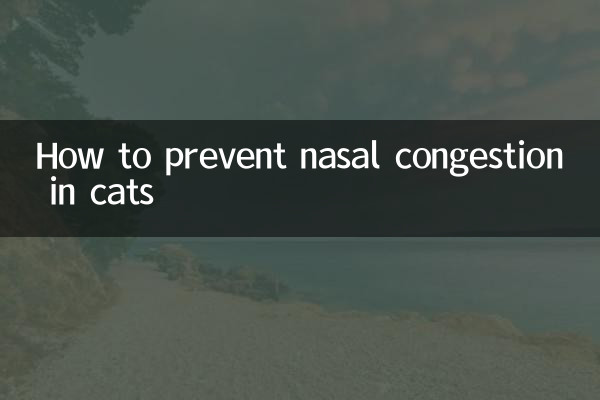How to prevent nasal congestion in cats
In the past 10 days, the topic of pet health has continued to rise in popularity on social media, and "cat nose branch" has become one of the most concerning issues for cat owners. Feline rhinotracheitis (feline infectious rhinotracheitis) is a common respiratory disease caused by the herpes virus. Symptoms include sneezing, runny nose, eye inflammation, etc. This article will combine the hot spots on the Internet to provide you with a practical guide to scientifically prevent nasal bronchitis in cats.
1. Statistics of popular topics related to cat nasal branch on the entire network (last 10 days)

| platform | Topic keywords | amount of discussion | heat index |
|---|---|---|---|
| #What to do when a cat sneezes# | 128,000 | ★★★☆☆ | |
| Tik Tok | Cat nasal branch symptom identification | 56,000 | ★★★★☆ |
| little red book | Prevention of nasal branch in kittens | 32,000 | ★★★☆☆ |
| Zhihu | Can cat rhinoplasty be transmitted to humans? | 29,000 | ★★☆☆☆ |
2. Core preventive measures for cat nasal branch
1.Vaccination: The core prevention method is regular vaccination with cat triple vaccine (including herpes virus vaccine). The recommended vaccination schedule is as follows:
| age | Number of vaccinations | Enhance needle spacing |
|---|---|---|
| 8 weeks old | first vaccination | - |
| 12 weeks old | second vaccination | 4 weeks |
| 16 weeks old | third vaccination | 4 weeks |
| Adulthood | 1 time per year | 12 months |
2.environmental management:
• Keep indoor temperature stable (20-26℃)
• Humidity controlled at 40%-60%
• Ventilate 2-3 times daily
• Regular disinfection (hypochlorous acid disinfectant is recommended)
3.Nutritional enhancement:
| Nutrients | effect | Recommended food |
|---|---|---|
| Lysine | Inhibit virus replication | Special Supplements/Chicken |
| Vitamin A | Maintain respiratory mucosa | animal liver |
| Omega-3 | anti-inflammatory effect | deep sea fish oil |
3. Hot Q&A: 5 questions that netizens are most concerned about
1.Q: How to prevent cross-infection in a multi-cat household?
A: New cats need to be isolated and observed for 2 weeks; sick cats are placed separately; food utensils and litter boxes are used separately.
2.Q: Can the vaccine prevent 100% of the disease?
A: The vaccine can reduce the risk of infection by 80%, but it cannot completely eliminate it and requires other preventive measures.
3.Q: How to prevent stray cats when rescuing them?
A: Prioritize isolation; supplement lysine; disinfect the environment before introducing other cats.
4.Q: Will turning on the air conditioner in summer cause nasal congestion?
A: Direct cold wind may cause recurrence. It is recommended to set up a windshield and keep the temperature not lower than 26℃.
5.Q: What symptoms require immediate medical attention?
A: Persistent high fever (>39.5℃), complete refusal to eat, and difficulty breathing.
4. Warnings on recent hot search cases
A certain Internet celebrity blogger failed to isolate his new cats, which resulted in five cats in his home being infected with nasal congestion. The treatment cost exceeded 10,000 yuan. This matter triggered widespread discussion, and experts reminded:
• New cats entering the home must be quarantined and observed
• Regular physical examination (recommended once every six months)
• Avoid frequent changes of environment
5. Prevention effect self-assessment form
| Check items | Compliance standards | Self-examination results |
|---|---|---|
| Vaccination | Complete a full set of immunizations on time | □Yes □No |
| Environmental disinfection | ≥2 times a week | □Yes □No |
| Nutritional supplements | Daily Lysine Intake | □Yes □No |
| quarantine measures | New cats should be quarantined alone for ≥14 days | □Yes □No |
Through the above structured prevention program, the risk of cat disease can be significantly reduced. If you find suspicious symptoms, it is recommended to contact the pet hospital for PCR testing in time (recent hot searches show an accuracy rate of 98%). Remember, prevention is always better than cure!

check the details

check the details